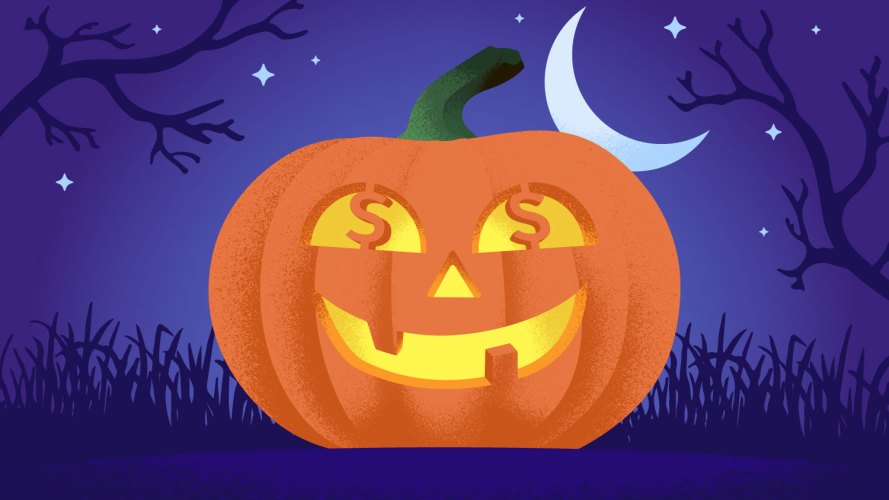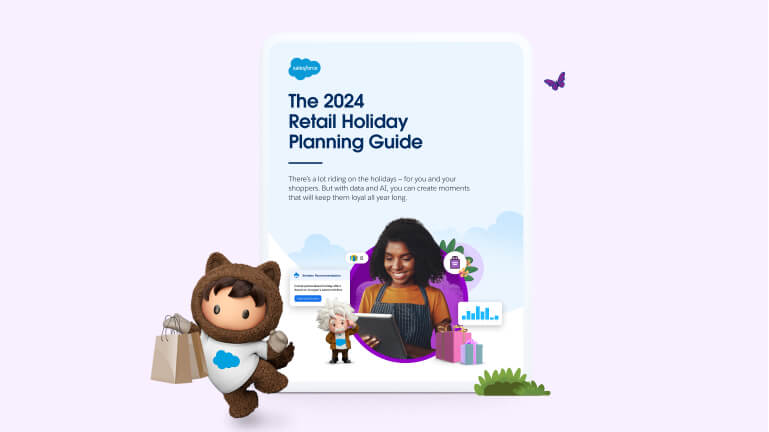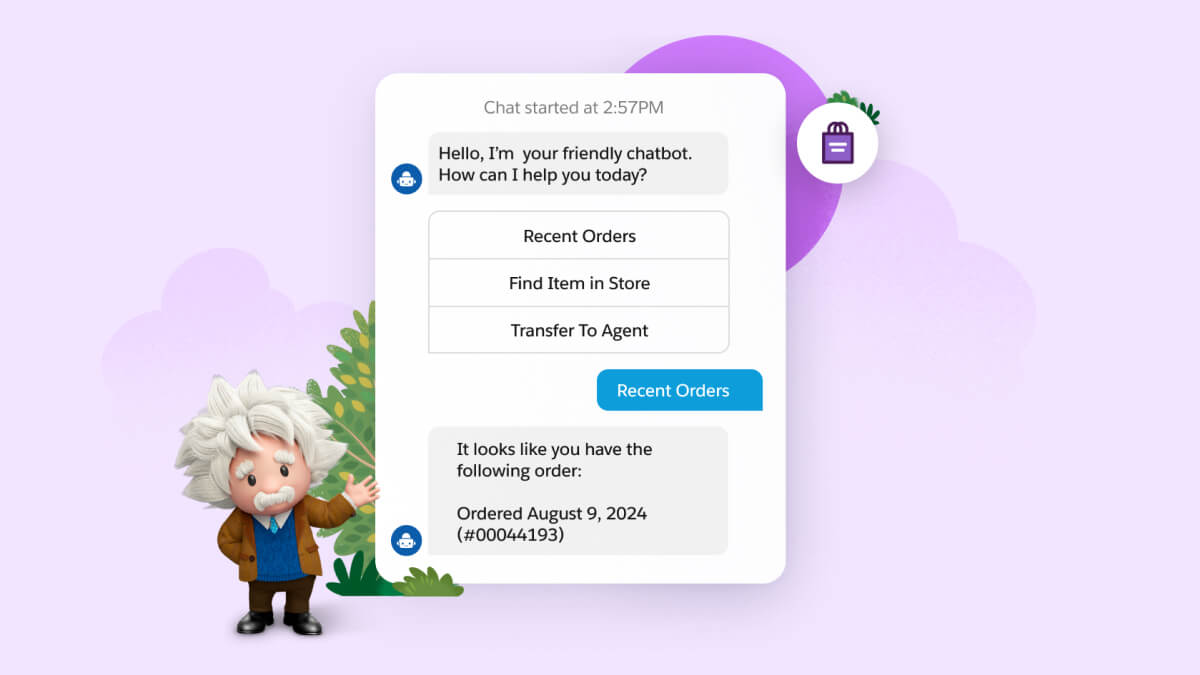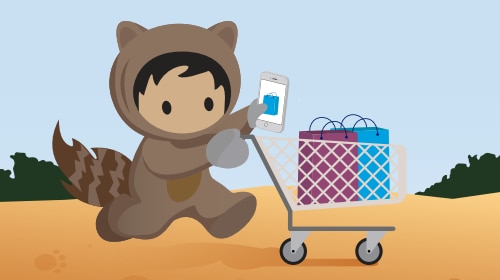What’s the scariest thing about Halloween? Some retailers may be missing out on opportunities to rev up sales through the end of October.
After some years of declining sales, retail’s Halloween season is now the industry’s second biggest retail holiday. A few years before the pandemic, Halloween spending was down in the U.S. from $9.1 billion in 2017 to $8 billion in 2020. But last year, the National Retail Federation (NRF) estimated the U.S. would spend a record $12.2 billion on Halloween-related items. That would break down to $4.1 billion on costumes, followed by $3.9 billion on decorations and $3.6 billion on candy.
We think this year could be even bigger. While shoppers have been price-conscious and deliberate in their spending so far in 2024, seasonal goods have been the one category where they’ve been willing to splurge.
Of course, Halloween sales can be challenging. There’s a vast range of products to juggle, and sales can be unexpectedly impacted by quick-changing external forces like cultural phenomena and weather. What’s more, unsold inventory becomes useless on November 1st.
Our top tips to drive Halloween sales:
- Move away from Ouija-board forecasting
- Bewitch shoppers for Summerween, October, and in between
- Creep it real on TikTok
- Strike a gourd with nostalgia
- If you’ve got it, haunt it with in-store ambience
- Discover what they buy in the shadows
- Don’t ghost last-minute shoppers
To drive more revenue this year, act more strategically based on historic and real-time data. Here are some ways you can turn Halloween from a fright night into a tricked-out treat of a season.
Retail Holiday Planning
Move away from Ouija-board forecasting
Retail Halloween stock changes every year, especially when it comes to costumes. It can be difficult to predict which merchandise will sell well and which could flop. What’s more, the Halloween season is short in terms of the replenishment cycle. If your forecast is off, you could end up with lots of inventory to discount on November 1st, eating into your margins.
Accurate forecasting is essential for letting the ghoul times roll. Before AI, retailers looked at historical sales data, market trends, and consumer behavior studies to predict which Halloween costumes would be most popular. It was time-consuming and couldn’t anticipate quick cultural shifts (for example, when a new fall sitcom premieres and everyone suddenly decides to dress up like the main characters).
Today, with access to social media, real-time data, and the use of AI, you can analyze incredible volumes of historical data and overlay them on social media discussions, customer sentiment, supply chain updates, and other information, from many more sources, much earlier. And you can ask AI for what-if analysis on what to stock, how much to order, how to price merchandise, and how to promote the items.
This allows you to adjust orders, promotions, and discounts throughout the selling season, so you keep up with shifts in the market and consumer expectations. You can focus on inventory that will sell. AI-powered forecasting can make your orders more accurate, minimizing stranded inventory costs and reducing markdown losses significantly.
(Back to top.)
Bewitch shoppers for Summerween, October, and in between
Plan ahead and start early. You want to get out there before your competitors, so you can grab the early-bird shoppers that start haunting the aisles before the air turns crisp. Spirit Halloween opened 1100 of its record 1500+ stores throughout August this year.
How early is too early? Many shoppers actually break a sweat when they first start planning their costumes and decor, as the “season” now starts over the summer. In fact, “Summerween” has taken hold in the U.S. The fictional holiday refers to the Disney+ series “Gravity Falls.” The show’s characters celebrate Halloween twice a year, in June and October. In real life, Halloween excitement kicked off in earnest this year as TikTok users lit up the site with a look at their June Summerween parties. At the end of August, retail Halloween sales had already surpassed those of similar timeframes in past years.

For some retailers, August – and even June – wasn’t early enough. Home Depot got out ahead of everyone, throwing a “Halfway to Halloween” sale in April, while Michael’s debuted the year’s first Halloween collection in June. Mars got in on the action, too, announcing its Halloween candy lineup back on May 21st.
(Back to top.)
Creep it real on TikTok
To build buzz around your retail Halloween inventory, create compelling videos for social media platforms. TikTokers love creating and sharing Halloween-related ideas, showing off their costumes, recipes, party ideas, and decor. And believe it or not, almost 30% of those who celebrate – especially in the Gen Z and millennial groups – purchased items last year specifically for social media posts.
Consumers are eating up the content, too, swarming the social media site for costume ideas. Last year, one in three TikTok users said the site played a part in their Halloween purchases. TikTok even published a guide on using the platform for marketing the holiday.
If you haven’t plotted your TikTok Halloween strategy yet, now’s the time. You can gain further traction by partnering with influencers to promote products, but don’t discount the value of social-media-worthy store displays, events, and promotions. Last year, Target featured Lewis the Pumpkin Ghoul in its stores. Lewis, an eight-foot-tall, talking jack o’lantern (who insists he is NOT a jack o’lantern) became a viral social media star as shoppers uploaded videos of their interactions with the character in stores. With all the attention, Lewis quickly sold out online, but he’s back in stores this year with new friends Pumpkin Rocker Billy, Bruce the Skeleton Ghoul, Pumpkin Iron Lewcy, and Little Lewis.
(Back to top.)
Strike a gourd with nostalgia
This is not your childhood Halloween. While kids still love playing dress-up and scoring free candy, the witching season is big business with adults, as well. For many, their love of Halloween is rooted in special childhood memories that you can mine to create emotional connections.
Today, all generations love to celebrate Halloween, including Gen Z (84%), millennials (81%), Gen X (69%), and boomers (56%). But behavior varies by age group:
- While 82% of boomers hand out candy to trick-or-treaters, that drops to 70% for Gen X and 64% for millennials.
- All groups want to bewitch their abodes: 61% of Gen Xers decorate their homes, followed by 53% of boomers and 59% of millennials.
- Sixty-seven percent of all consumers prefer to buy chocolate and peanut butter Halloween candy.
- Millennials are Halloween’s big spenders. A 2022 LendingTree survey found that they plan to spend $255 on average on Halloween, followed by Gen Z at $202, Gen X at $145, and baby boomers at $58.
Try advanced segmentation to create marketing messages targeting the preferences of the generations, both stirring up nostalgia – promoting retro candy and costumes – and giving a nod to their current spending habits and interests.
(Back to top.)
If you’ve got it, haunt it with in-store ambience
Most consumers prefer to shop in-store for Halloween items. Over half of shoppers expect to purchase from mass retailers like Walmart and Target, while 44% will hit up grocery stores, and 33% will buy from big-box stores such as Costco and Sam’s Club. Just 18% plan to shop at online retailers.
Why go into a store? For shoppers who love Halloween, browsing your aisles helps them get excited about the holiday and also inspires ideas that could lead to unplanned purchases. Go big with the decor and displays — it’s a good bet you’ll have employees that would love spooking-up the store for you.
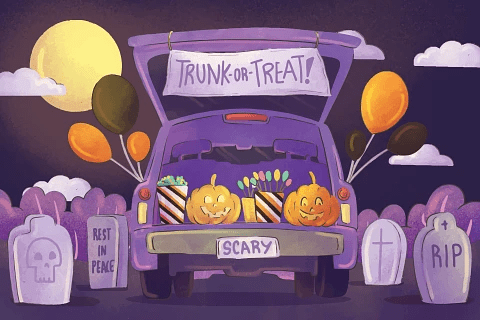
What else can you do to build excitement at the point of sale (POS)? First, be sure your POS system is user- and shopper-friendly. A better POS experience is especially critical during busy holiday shopping periods when time is short. Then, try these ideas:
- Create a Halloween section. Hang elaborate decorations that promote special holiday bundles and offers. Use your displays to inspire shoppers with creative costume ideas, decor crafts, or new menu options.
- Offer in-store-only promos and discounts. This helps you drive traffic to the store and allows you to start selling earlier so you can better manage your inventory and avoid overstocks at the end of the season.
- Use in-store analytics to drive retail Halloween sales. Yes, you can entice shoppers looking for non-Halloween items to come over to the dark side. Track foot traffic and customer behavior by using heat maps, RFID technologies, and cameras to see which sections of your store attract the most attention, then trick out those areas with decorations and eye-catching displays to help shoppers easily find (or stumble across) Halloween merchandise they didn’t even know they wanted.
- Organize in-store events like costume contests, pumpkin-carving workshops, or a trunk-or-treat in your parking lot. These help you connect on an emotional level and add value to the shopping experience. And don’t forget your online shoppers — organize virtual costume or home-decorating contests to increase engagement.
(Back to top.)
Discover what they buy in the shadows
Think about new ways shoppers could celebrate the holiday, and feature products for those unserved segments in your stores. For example, people are celebrating with their pets these days. NRF predicted shoppers would spend $700 million on pet costumes last year. The most popular pet costumes include a pumpkin (11%) and a hot dog (7%) followed by bats, bumblebees, spiders, and devils. This year, PetSmart is dedicating more floor space to its seasonal collection. It includes a robust assortment of costumes, including some for small animals like bearded dragons and guinea pigs.

You can also think about expanding your assortment of product categories, like home decor. Halloween decorations are becoming more elaborate every year. In 2023, 77% of people celebrating Halloween planned to buy decorations. The twist? Many were looking for non-traditional colors (pink pumpkins, anyone?) that would celebrate the season while still matching the living room. It might be time to roll out some pillows and centerpieces in Pantone’s color of the year, Peach Fuzz, which incidentally matches well with traditional Halloween colors.
Target, already a star for its Halloween shop and product line (known as “Hyde and Eek”) has set itself apart with a product line that pioneers accessibility. Its adaptive Halloween costumes align with the wearers’ mobility or sensory needs. That’s the kind of smart, thoughtful product extension that grows loyalty and inspires positive word of mouth.
(Back to top.)
Don’t ghost last-minute shoppers
Despite the head-start that many Halloween shoppers choose, don’t forget that some will still wait until the end of October to start putting together a costume or scooping up what’s left of the candy. Don’t leave them in the lurch.
Start by sending reminders to online shoppers with Halloween items sitting in their carts. Remind them that it’s almost Halloween and they don’t want to miss out on the fun.
Also, time your assortment rollout over several weeks to make sure late shoppers can enjoy the holiday, too. And make that eleventh-hour run quick and easy by offering click-and-collect, drive-up, and delivery options.
(Back to top.)
Scare up some retail Halloween excitement this year
Embracing the spirit of Halloween isn’t just about store decorations or pumpkin-shaped candy. It’s about building excitement around the holiday to inspire shoppers to dress up, decorate, and give out treats. By trying new strategies, like interactive displays, spooky events, or personalized marketing campaigns, retailers can tap into the excitement and nostalgia of the season.
So, go ahead, take a chance on something new this Halloween. Who knows? It might just be the treat your business needs to drive more revenue this spooktastic season.
